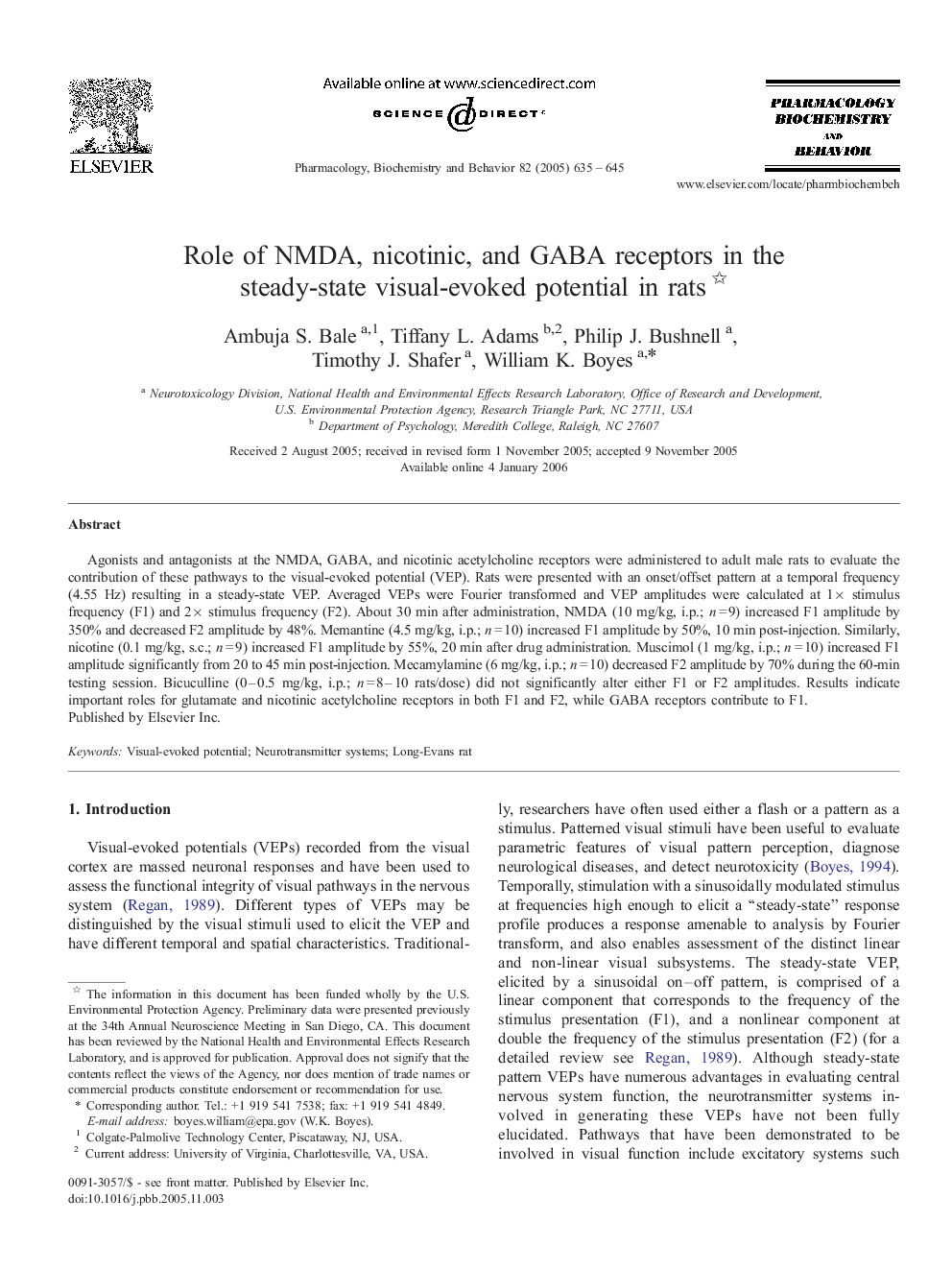| کد مقاله | کد نشریه | سال انتشار | مقاله انگلیسی | نسخه تمام متن |
|---|---|---|---|---|
| 10838685 | 1067175 | 2005 | 11 صفحه PDF | دانلود رایگان |
عنوان انگلیسی مقاله ISI
Role of NMDA, nicotinic, and GABA receptors in the steady-state visual-evoked potential in rats
دانلود مقاله + سفارش ترجمه
دانلود مقاله ISI انگلیسی
رایگان برای ایرانیان
کلمات کلیدی
موضوعات مرتبط
علوم زیستی و بیوفناوری
بیوشیمی، ژنتیک و زیست شناسی مولکولی
زیست شیمی
پیش نمایش صفحه اول مقاله

چکیده انگلیسی
Agonists and antagonists at the NMDA, GABA, and nicotinic acetylcholine receptors were administered to adult male rats to evaluate the contribution of these pathways to the visual-evoked potential (VEP). Rats were presented with an onset/offset pattern at a temporal frequency (4.55 Hz) resulting in a steady-state VEP. Averaged VEPs were Fourier transformed and VEP amplitudes were calculated at 1à stimulus frequency (F1) and 2à stimulus frequency (F2). About 30 min after administration, NMDA (10 mg/kg, i.p.; n = 9) increased F1 amplitude by 350% and decreased F2 amplitude by 48%. Memantine (4.5 mg/kg, i.p.; n = 10) increased F1 amplitude by 50%, 10 min post-injection. Similarly, nicotine (0.1 mg/kg, s.c.; n = 9) increased F1 amplitude by 55%, 20 min after drug administration. Muscimol (1 mg/kg, i.p.; n = 10) increased F1 amplitude significantly from 20 to 45 min post-injection. Mecamylamine (6 mg/kg, i.p.; n = 10) decreased F2 amplitude by 70% during the 60-min testing session. Bicuculline (0-0.5 mg/kg, i.p.; n = 8-10 rats/dose) did not significantly alter either F1 or F2 amplitudes. Results indicate important roles for glutamate and nicotinic acetylcholine receptors in both F1 and F2, while GABA receptors contribute to F1.
ناشر
Database: Elsevier - ScienceDirect (ساینس دایرکت)
Journal: Pharmacology Biochemistry and Behavior - Volume 82, Issue 4, December 2005, Pages 635-645
Journal: Pharmacology Biochemistry and Behavior - Volume 82, Issue 4, December 2005, Pages 635-645
نویسندگان
Ambuja S. Bale, Tiffany L. Adams, Philip J. Bushnell, Timothy J. Shafer, William K. Boyes,